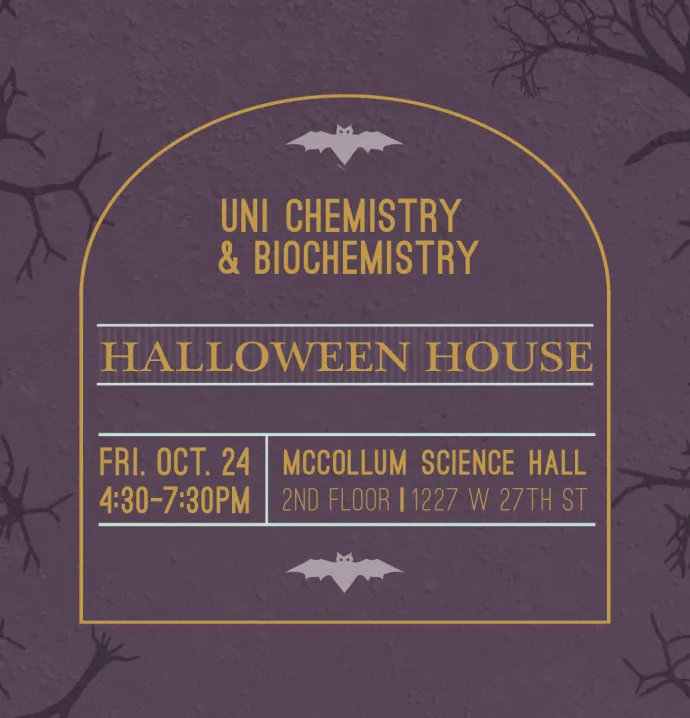UNI implementing bystander intervention program to create safer campus community
UNI implementing bystander intervention program to create safer campus community
 To cultivate a safer and more respectful campus community, the University of Northern Iowa is implementing the Green Dot program, with a formal launch scheduled for Sept. 19. This national bystander intervention program with an emphasis on reducing gender-based violence, sexual assault and stalking teaches the philosophy of overpowering red dots (acts of power-based interpersonal violence) with green dots (actions or choices that promote safety and an intolerance for violence). The program is sponsored by Northern Iowa Student Government (NISG).
To cultivate a safer and more respectful campus community, the University of Northern Iowa is implementing the Green Dot program, with a formal launch scheduled for Sept. 19. This national bystander intervention program with an emphasis on reducing gender-based violence, sexual assault and stalking teaches the philosophy of overpowering red dots (acts of power-based interpersonal violence) with green dots (actions or choices that promote safety and an intolerance for violence). The program is sponsored by Northern Iowa Student Government (NISG).
“UNI has always been about community,” said Jessica Moon, director of Honors & Scholars Programs who is also a certified Green Dot facilitator. “People come here because we have a great sense of community — and I think that this is a way of just growing and protecting that. It's a matter of each of us doing something small, and all of those little individual actions can add up to a culture shift and a change in the way our campus behaves and interacts with one another.”
The Green Dot method hinges upon bystanders intervening on the behalf of others in one of three ways: direct intervention, providing a distraction or delegating the intervention to someone else. Students, faculty and staff members have the chance to learn about each of these methods and put them into practice in training sessions which are led by Green Dot facilitators who are all UNI faculty and staff members.
“I think that for faculty and staff — if they're anything like me — when we get alerts that something has happened on our campus, it's really a heartbreaking thing,” said Moon. “You don't want to think about any of our students or anyone in our community being part of an incident that we know is so harmful and so damaging to their college experience. Green Dot is a small way that we can each help prevent those incidents that none of us want to hear about.”
There are separate training sessions for employees and students, but all the overview sessions are 90 minutes long. Moon likes the fact that the sessions are led by faculty and staff rather than outsiders coming into campus because it creates consistency with the program.
“As for students who participate, I think it's a matter of creating the culture you want,” said Moon. “What do you want this community to be? Each student can have a role in that.”
Bringing Green Dot to campus has been in the works since the 2020-2021 academic year when Elle Boeding, ‘21, was NISG president. Boeding was part of a task force that was focused on educating students about sexual assault, gender violence and stalking on campus. At first, the idea was for there to be a violence prevention training for first-year students at orientation.
Reducing gender violence on campus was especially important to Boeding who had been a resident assistant and a member of orientation staff. These experiences had opened her eyes to ways that sexual violence can impact a student’s life.
“There's a lot of statistics out there about how the college retention rate of student survivors is really, really low, especially if they go through the Title IX process,” said Boeding who is now completing a master’s of public policy in education policy at Vanderbilt University. “So being able to stop violence before it happens is crucial.”
Ultimately, the task force shifted away from the idea of having a training session at orientation and decided that something on a larger scale would better fit the needs of the institution.
“If you're going to be doing any sort of violence prevention work, it's really about cultural change,” said Boeding. “It's not as simple as a presentation when you get to campus and then you're set. It's just not that simple.”
After weighing the pros and cons of a number of different violence prevention programs, Boeding said that Green Dot seemed like the only answer.
“There wasn’t a question of if it would be the best for our students,” she said.
One of the things that stood out about Green Dot was how inclusive it was. The Green Dot representative who talked to the task force about the program was the only program representative to discuss LGBTQ issues, said Boeding.
Something else that was unique about Green Dot was that it was created based on a variety of theories, rather than just one.
“Green Dot is based on a variety of research from a variety of disciplines, not just one theory,” said Leah Gutknecht, assistant to the president for compliance and equity management and Title IX officer. “It’s the cream of the crop — the best concepts from all of these different disciplines — and it brings all those best practices together.”
Before Green Dot, Boeding reflected on there being siloed efforts for violence prevention in different student organizations and offices across campus.
“A lot of places were doing really great work,” said Boeding. “We just needed to find a way to bring them back together. And I think Green Dot really is that way.”
Gutknecht echoed this sentiment.
“I think Green Dot’s coming in with an umbrella that can make everything that’s already happening that much more focused and that much more energized,” she said. “It allows us to kind of put a branding to it that we haven't really had before. We've done a little bit of that in the past, but not on the scale of what Green Dot can offer. So I think Green Dot has the potential to reach more people.”
Gutknecht loves the way Green Dot has brought people across campus together around a common goal. For example, the Department of Applied Engineering & Technical Management is helping build Green Dot displays that have been made from recycled COVID plexiglass transaction barriers. The barriers have been transformed into big red dots that the campus community will cover with green dots.
The campus will start seeing these displays, Green Dot signs and Green Dot screensavers go live during Green Dot week, which is Sept. 19-23. There will be tabling to educate the campus community on this new program, and trainings will be happening every day during Green Dot week. Students and employees can already check out the Green Dot website and register for trainings.
On Wednesday, Sept. 21, there will be a launch event in the Maucker Union Coffee House from 7 p.m. to 8:30 p.m. to explain even more about Green Dot and how it got to campus. There will be food, activities, games and giveaways, and President Mark A. Nook and NISG President Leila Mašinović will be speaking at the event.
It’s the grand culmination that has been roughly two years in the making. And at every step of the way, UNI students were leading the charge.
“I feel strongly about making sure that the message about Green Dot is that this was student-selected and student-funded,” Gutknecht. “It was student-driven.”
Although Boeding isn’t on campus to see the results of her work, she is looking forward to seeing how the campus culture shifts for the better. She is hoping the results will align with research on the effectiveness of Green Dot, including a report from the American Journal of Preventative Medicine that states interpersonal violence victimization rates were 17% lower at schools that had implemented Green Dot compared to those that had no bystander intervention program.
“My hope is that UNI can create a community that cares about one another in a really deep and authentic way,” Boeding said. “We have a really special set of staff at UNI who go above and beyond for students in a way I have not experienced anywhere else. So I think we have an opportunity with that amazing set of staff and students to make our campus a safer place.”




